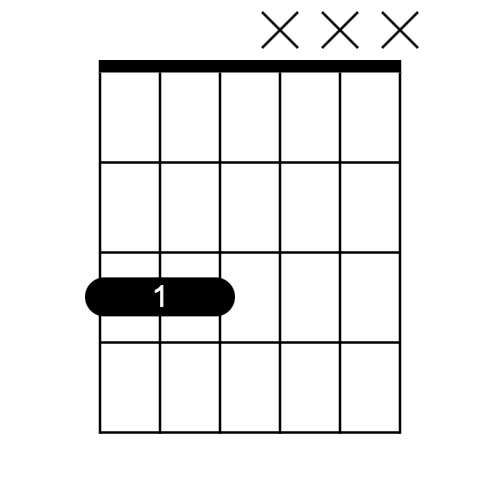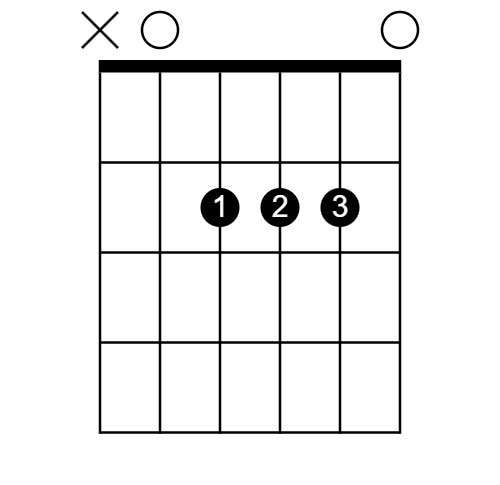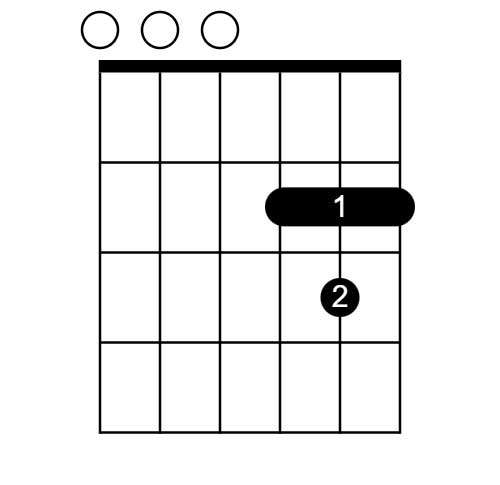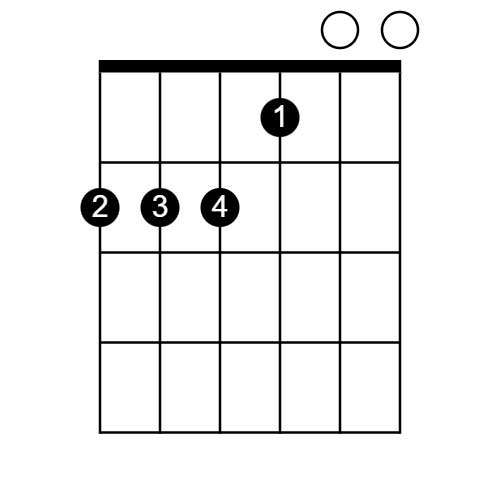Drop D tuning on a guitar refers to the practice of tuning the lowest string, typically the sixth string, down by one whole step to D instead of E.
This guitar tuning configuration is significant because it enables guitarists to achieve a heavier and darker sound, which is ideal for hard rock, metal, and alternative music genres.
Not only that, but it allows guitar players to easily play power chords & play riffs with a fuller, more aggressive tone by lowering the pitch of the low e string.
The popularity of Drop D tuning stems not only from its versatility & distinct, low-end richness, but also because it’s so easy to implement. In this article we show you how & answer any questions you might have.

How To Implement Drop D Tuning (Drop D Tuner)
If you already have your guitar tuned to standard guitar tuning (EADGBE) then the process is relatively easy.
Step 1: Play your A string (2nd thickest) at the 5th fret & simultaneously play your low E string (open).
Step 2: Turn the tuning peg on your low E string to loosen it until it matches the pitch of your A string a the 5th fret. This might take a couple tries to fine tune the two strings.
Step 3: Once your Low E string matches the pitch of your A string at the 5th fret, tune the rest of the guitar as you normally would for E standard (guitar tuner provided below).
And That’s it! Pretty easy & effective for playing power chords at lightning speed with a single finger.
Benefits of Drop D Tuning
As a guitarist, you can unlock a wealth of sonic possibilities by switching to Drop D tuning. By simply tuning your sixth string down from E to D, you gain access to a deeper and more resonant low range that can give your music a heavier and more impactful sound. This is particularly advantageous if you’re delving into genres like metal, alternative, or rock. Here’s a breakdown of the benefits you’ll enjoy with Drop D tuning:
| Benefit | How It Affects You |
|---|---|
| Extended Low Range | You can play deeper, more powerful notes, which can enhance the heaviness and darkness in your music, especially useful in heavier music genres. |
| Easier Power Chords | You can form power chords with ease, using just one finger to bar the bottom three strings, streamlining your playing technique and saving effort. |
| Enhanced Versatility | You’ll find new chord voicings, melodic patterns, and harmonic options that might not be as accessible in standard tuning, giving you more creative freedom. |
| Convenient For Alternate Tunings | Drop D serves as a great stepping stone for you to experiment with other tunings, allowing for quick and minor adjustments to explore different sounds. |
| Popular In Various Genres | You’ll be aligning with a popular trend used by many metal bands and artists across rock, punk, grunge, and alternative music, enabling you to recreate or innovate on iconic riffs and songs. |
By embracing Drop D tuning, you’re not just adjusting the pitch of a string; you’re opening up a new realm of musical expression and technical ease that can redefine your guitar playing experience.
What Are The Drawbacks of Drop D Tuning?
Drop D tuning offers unique advantages for guitarists, but it also comes with its own set of challenges. While the drawbacks are few, they are worth considering, especially if you frequently alternate between different tunings or play alongside musicians who use standard E tuning. Here’s a look at some potential downsides of using Drop D tuning:
| Drawback | Description |
|---|---|
| Transposition Challenges | You may face difficulties when playing with others or following standard E tuning tabs, as it requires transposing and adjusting your fingerings to match the Drop D tuning. |
| Potential Buzzing or Intonation Issues | The lower tension on the sixth string in Drop D tuning could cause buzzing or intonation problems, possibly necessitating guitar setup adjustments like truss rod tweaks, action modification, or intonation correction. |
| Reduced Chord Voicings | Drop D tuning may limit your chord voicing options, making some standard tuning chord shapes and open string voicings unplayable, which affects the complexity and variety of chords at your disposal. |
| Constant Retuning | If you frequently switch back to standard tuning, the constant need to retune can be disruptive during live performances or sessions, potentially requiring an additional guitar for smooth transitions. |
Being aware of these drawbacks will help you navigate and mitigate any issues that arise, ensuring you can fully enjoy the benefits of Drop D tuning while being prepared for its challenges.
Drop D Chords To Try
If you like to play guitar chords, here’s a few to try out with your new tuning.
Drop D Power Chord (D5)
Place your index finger across the 5th fret of the low E string (now tuned to D), the A string, and other D string.
Strum the lowest three strings (D, A, and D).

This is a movable shape can be used to play power chords in different positions across the fretboard. Below are a couple more chords. If you need help reading chord charts, click here.
Drop D Open A (A)

Drop D Open D (D)

Drop D Open E (E)

Common Mistakes to Avoid in Drop D Tuning
| Common Mistakes in Drop D Tuning | Description |
|---|---|
| Over-Tensioning The Strings | When switching from Drop D to standard tuning, avoid adding too much tension to the sixth string to prevent string breakage or damage to the guitar neck. Tune carefully and incrementally. |
| Neglecting Intonation | Drop D tuning can affect the guitar’s intonation. Ensure you adjust the intonation regularly for accurate pitch across the fretboard after tuning down the sixth string. |
| Not Adjusting Technique | Drop D tuning changes fingerings and techniques. Adapting your play style and chord shapes is necessary to accommodate the new tuning and avoid mistakes. |
| Relying Solely On Power Chords | Don’t just stick to power chords in Drop D tuning. Explore other chord voicings, melodic lines, and arpeggios to fully express the tuning’s capabilities. |
| Inconsistent String Muting | Proper string muting is crucial in Drop D tuning to avoid unwanted string noise. Practice effective muting techniques for cleaner playing. |
| Neglecting To Re-tune After Playing | Always re-tune your guitar to Drop D after playing in standard tuning to avoid confusion and ensure you’re in the correct pitch. |
Other Alternate Tunings
How to tune a guitar to Drop C
How to tune a guitar to Open D
How to tune a guitar to D standard
How to tune an 8 string guitar
Frequently Asked Questions
What are the open note differences between standard tuning & Drop D?
The only difference between standard tuning and Drop D tuning is the 6th string. In standard tuning, the 6th string is tuned to E, while in Drop D tuning, it is tuned down to D. All other strings remain the same in both tunings.
What is the difference between Drop D & Drop C?
Drop D tuning involves tuning only one string (the sixth string) down to D, while Drop C tuning involves tuning all six strings down, resulting in a lower overall pitch and a heavy sound.
The difference between the open strings for these two are: D-A-D-G-B-E versus C-G-C-F-A-D
Why is Drop D tuning so popular?
Firstly, it offers guitar players an easy way to create a powerful & fuller sound with minimal finger placement, making it accessible to players of all skill levels.
It’s also easy to revert back to standard tuning & has become widely used by influential musicians who have incorporated Drop D tuning into their music. This has lead to its widespread recognition and adoption by guitarists worldwide.
Is Drop D the same as Open D?
No, Drop D and Open D tunings are not the same, although they both involve tuning the guitar to a different pitch.
Drop D tuning involves lowering the pitch of the sixth string (E) down to D, while leaving the other strings in standard tuning. This results in a lower overall tuning with a focus on the low D note, allowing for easy power chords & a heavier sound.
Open D tuning, on the other hand, involves tuning the guitar to a specific open chord. In Open D tuning, the guitar is tuned to DADF#AD. This tuning creates a D major chord when strummed open, with the strings forming the notes of the D major triad.
What is the difference between D tuning and Drop D tuning?
Basically, standard D tuning requires you to lower the pitch of all of the strings, while Drop D only requires you to lower one (when compared to E standard).
In standard D tuning, all strings are tuned down one whole step from standard E tuning. The guitar is tuned to DADGBE, with the lowest string (the sixth string) tuned to D. This results in a lower overall pitch for the entire guitar.
In Drop D tuning, however, only the sixth string is tuned down one whole step to D, while the rest of the strings remain in standard E tuning, resulting in the open strings: DADGBE. This means that the overall pitch of the guitar remains the same as E standard, except for the lower pitch on the sixth string.
Is Drop D tuning the same as half step down tuning?
No, Drop D tuning is not the same as half step down tuning.
Drop D tuning specifically refers to tuning the sixth string (the lowest string) down a whole step from E to D while leaving the other strings in standard E tuning. This creates a lower pitch on the sixth string, allowing easy power chord formation & a heavier sound.
On the other hand, half step down tuning, also known as Eb tuning or “E flat tuning”, involves tuning all six strings down by a half step. In this tuning, every string is lowered uniformly, resulting in an overall lower pitch across the entire guitar.
